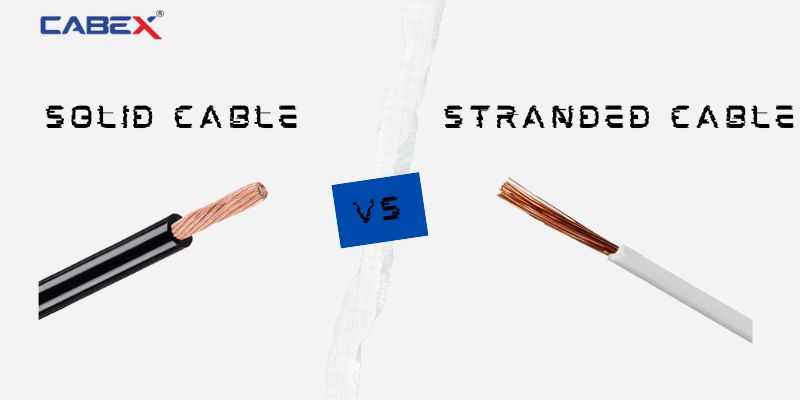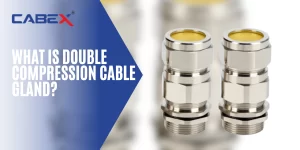Introduction
Difference Between Solid and Stranded Cables. In the world of modern technology and telecommunications, cables play a crucial role in transmitting data, signals, and power across various devices and networks. Two common types of cables used extensively in this domain are Solid Cables and Stranded Cables. While both serve the same fundamental purpose, they possess distinct characteristics that make them suitable for specific applications. In this comprehensive guide, we will explore the key difference between solid and stranded cables, delving into their construction, advantages, disadvantages, and ideal usage scenarios.
Understanding Solid Cables
Solid cables, as the name suggests, are primarily composed of a single, solid conductor at their core. This conductor is typically made of copper, aluminum, or other conductive materials. Surrounding the core, there are various protective layers that shield the conductor from external factors such as moisture, physical damage, and interference. These layers may include a dielectric insulator, a metallic shield, and a durable outer jacket.
The rigid and robust structure of solid cables renders them excellent for long-distance applications and installations where minimal flexibility is required. Their single-conductor design also helps reduce signal loss, making them ideal for transmitting high-frequency signals over extended distances.
Advantages of Solid Cables
- Signal Integrity: The solid conductor’s uniform structure minimizes signal loss, ensuring better signal integrity during data transmission. This characteristic makes solid cables well-suited for applications that demand reliable and uninterrupted data flow.
- Long-Distance Performance: Due to their sturdy construction and reduced signal attenuation, solid cables exhibit superior performance over extended distances, making them an ideal choice for networking infrastructure in large buildings, data centers, and enterprise environments.
- Low Cost: Solid cables are generally more cost-effective to manufacture compared to their stranded counterparts. This cost advantage has contributed to their popularity in various networking and telecommunications installations.
Limitations of Solid Cables
- Flexibility: Solid cables lack the flexibility that stranded cables offer. This makes them less suitable for applications where frequent bending and movement are required, as excessive flexing can cause damage or breakage.
- Susceptibility to Breakage: The rigid structure of solid cables can make them more prone to breakage when subjected to repeated bending, twisting, or pulling, especially in environments where physical stress is common.
- Termination Difficulty: Terminating solid cables can be more challenging due to their solid conductor. Specialized tools and techniques are often required to ensure secure and reliable terminations.
Understanding Stranded Cables
Stranded cables, on the other hand, are constructed using multiple thin strands of conductive material, usually copper or tinned copper. These strands are braided or twisted together to form a flexible and resilient core. Like solid cables, stranded cables also feature protective layers such as insulation, shielding, and an outer jacket to safeguard the conductors from external elements.
The flexibility of stranded cables makes them ideal for applications that involve constant movement and bending, such as patch cords, robotics, and portable electronic devices. The numerous individual strands increase the cable’s surface area, reducing the risk of heat buildup and ensuring better handling of high currents.
Advantages of Stranded Cables
- Flexibility: Stranded cables’ pliable nature allows them to withstand frequent bending and movement without compromising their structural integrity. This feature makes them ideal for applications where cables need to be routed through tight spaces or connected to movable components.
- Vibration Resistance: Stranded cables are more resistant to vibrations and mechanical stress, making them suitable for use in environments where movement and mechanical disturbances are common.
- Enhanced Current Carrying Capacity: The multiple strands in stranded cables increase their surface area, thereby improving their ability to handle high currents and reducing the risk of overheating.
Limitations of Stranded Cables
- Signal Loss: The multiple strands in stranded cables may introduce higher resistance and signal loss compared to solid cables, particularly when used for high-frequency applications or over long distances.
- Cost: Stranded cables tend to be more expensive to manufacture than solid cables, mainly due to the additional process involved in creating and braiding the multiple strands.
Ideal Usage Scenarios
- Solid Cables: Solid cables are best suited for structured cabling systems, backbone installations, and other scenarios where long-distance signal transmission with minimal signal loss is crucial. They are commonly used in office buildings, data centers, and telecommunication networks.
- Stranded Cables: Stranded cables are the preferred choice for applications requiring flexibility and durability. They are commonly used in patch cords, robotics, portable electronics, audio systems, and environments with frequent movement and bending.
Conclusion
In conclusion, the difference between solid and stranded cables lies in their internal construction, flexibility, and application suitability. While solid cables offer superior signal integrity and performance over long distances, stranded cables excel in applications that demand flexibility and resistance to mechanical stress. The decision to choose one over the other should be based on the specific requirements of the installation or project. Understanding these differences enables professionals and enthusiasts in the technology and telecommunications field to make informed decisions when selecting cables for their applications.
FAQ:
Solid cables have a single conductor, while stranded cables consist of multiple thin strands braided together for flexibility.
Solid cables are better suited for long-distance applications due to their minimal signal loss and higher signal integrity.
Stranded cables offer flexibility, vibration resistance, and enhanced current carrying capacity, making them ideal for movable components and tight spaces.
Solid cables are suitable for structured cabling and backbone installations, while stranded cables excel in patch cords, robotics, and portable electronics.
Solid cables are generally more cost-effective to manufacture compared to stranded cables.
- IP68 Brass Cable Glands | Waterproof & Durable Cable Glands
- Flexible vs Rigid Conduit Fittings: A Definitive Guide for 2025
- Earthing Accessories in India: Complete Guide by Cabex India
- Nickel-Plated Brass Cable Glands: Improving Corrosion Resistance in Industrial Environments
- Connector Problems Solved: Tips and Tricks for Cable Glands and Industrial Applications











